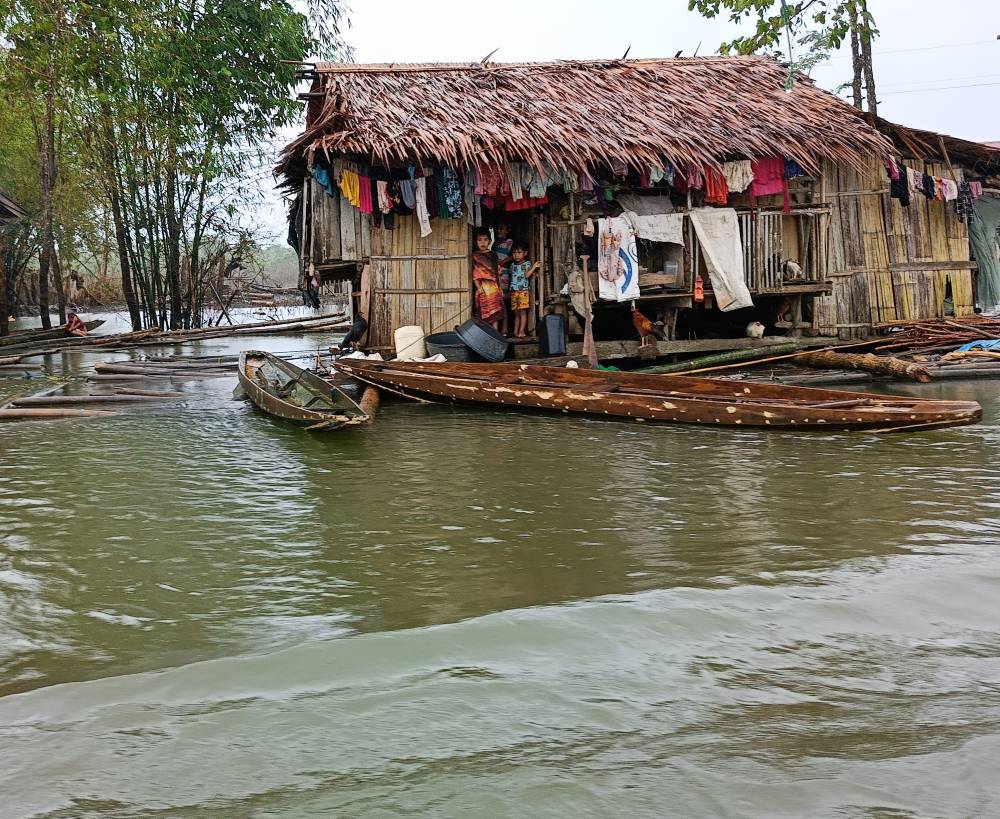Agusan del Sur folk in ‘floating’ village struggle to survive

TALACOGON, AGUSAN DEL SUR—Almost a month after the devastating floods that struck the province of Agusan del Sur and most areas in Mindanao on Jan. 31, residents of La Flora’s floating village found near the banks of Agusan River in this town continue to fight for survival.
Roselyn Santin, mother of four children, said they were depending solely on the relief provided by both government and private entities as freshwater fish, which used to thrive in the Agusan River where they used to depend for a living, had become too scarce after the floods.Her husband, a fisherman, was recently finding it hard to catch freshwater fish like mudfish, carp and tilapia from the once abundant Agusan River.
The reduced catch was not enough to sustain the needs of their family, Santin told the Inquirer on Friday.
“The fish seemed to have gone from the Agusan River, maybe carried away by the powerful current,” Santin lamented in vernacular.
She said she received relief food packs from the provincial government containing essentials like rice and canned goods but she was worried as to how long these would last. Like most of her neighbors, she hoped that more assistance would come.Alma Miflores, another resident of one of the floating houses in the area populated by about 500 people, said she received relief containing rice, coffee, canned goods and biscuits from Emcor Appliance Center last week but she remained uncertain about whether or not future aid would come.

The worst
Built on bamboo and balsa wood platforms tethered with sturdy ropes and vines around Bangkal trees, their floating houses, home to families dependent on freshwater fish catch, have endured the powerful currents and remained standing amidst the heavy flooding of the nearby Agusan River that overflowed to their area.The deluge even submerged the two-story La Flora Elementary School, leaving only its roof visible above the waterline, said Antero Atad, the school’s head teacher.
Built on dry ground close to the floating houses, the school building was constructed at least 10 feet above the ground to anticipate the floods. But at the height of January’s flooding, the water went beyond the floor of the elevated building and submerged Atad’s office and the classrooms in four feet of floodwater.Atad described the flood as the worst to have occurred in the area in his 16 years as a public school teacher.
He said the school supplies that they kept safe in his office were carried away by floodwaters while he and 11 teachers had to evacuate.
In the last two weeks, teachers at La Flora were holding classes at the evacuation centers while waiting for the waters in the school grounds to recede. The school has a total of 305 pupils from Kindergarten to Grade 6.
The floating village makes up half of La Flora village’s 1,397 total population as of the 2020 Census. The other half of the village’s residents have houses on land but also owned rafts to get them to safety during floods, which often occurred in the community due to their proximity to Agusan River.

A month to recede
According to the Agusan del Sur Provincial Disaster Risk Reduction and Management Office, a total of 392,947 people or 53 percent of the province’s population have been affected by the Jan. 31 flooding brought about by the rains spawned by the trough of the low pressure area that prevailed over parts of Mindanao. The province has 13 municipalities and a population of 739,367 as of the 2020 census.
In a briefing during the visit of President Marcos in the province on Feb. 16, Gov. Santiago Cane Jr. said that based on historical patterns, it would normally take more than a month for the floodwaters to recede and normalize in Agusan del Sur.
As a member of the Search and Rescue Agusan del Sur (Saras), Atad said he planned to conduct survival skills training for both students and teachers during the upcoming summer vacation and the start of the new school year in July.
He said the training would include swimming and water survival hoped to boost the preparedness of students and residents to deal with disasters like flooding.
















